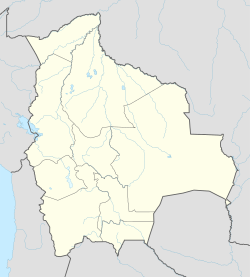Cachuela Esperanza | |
|---|---|
| Coordinates: 10°32′S65°35′W / 10.533°S 65.583°W | |
| Country | |
| Department | Beni Department |
| Province | Vaca Díez Province |
| Municipality | Guayaramerín Municipality |
| Elevation | 440 ft (134 m) |
| Population (2001) | |
• Total | 1,364 |
| Time zone | UTC-4 (BOT) |
Cachuela Esperanza is a village in the Bolivian Departamento Beni.



